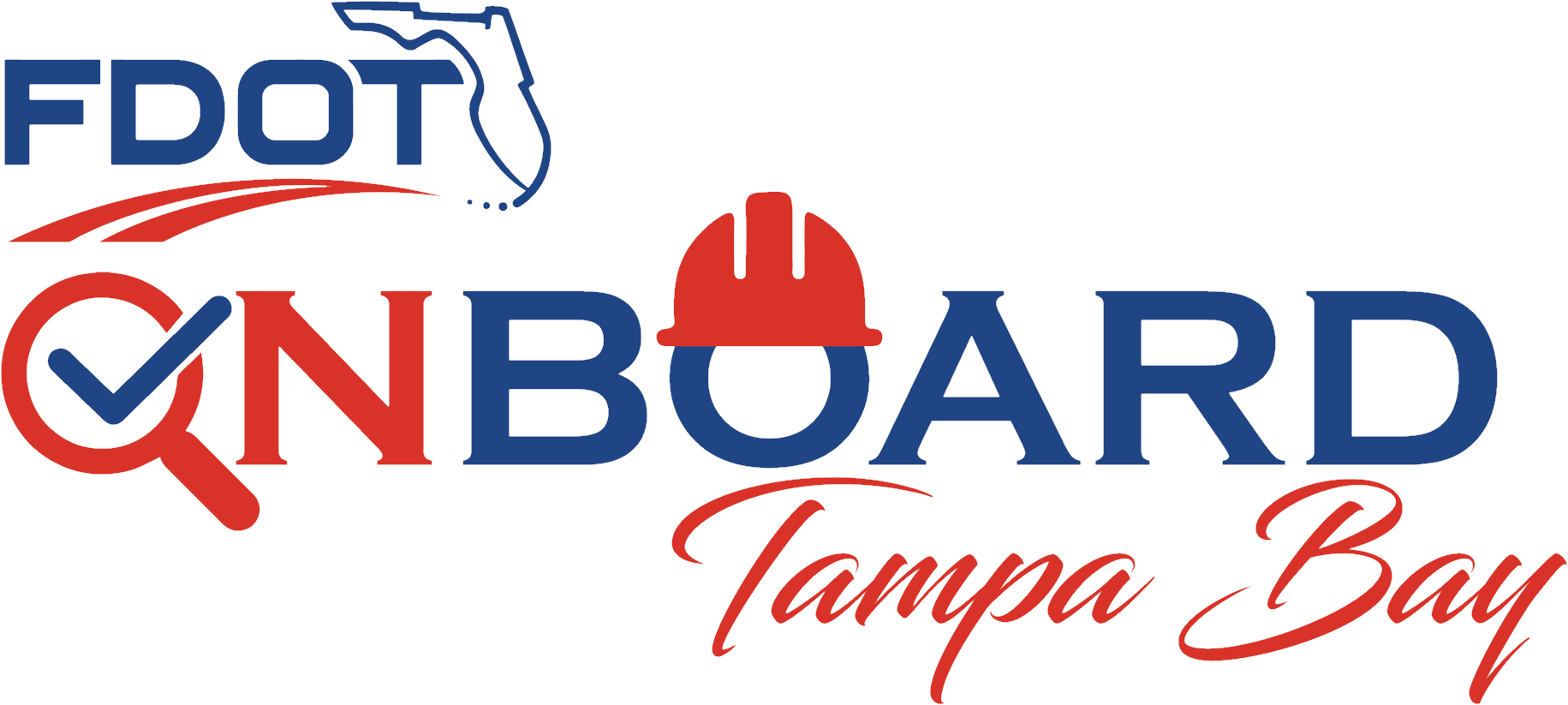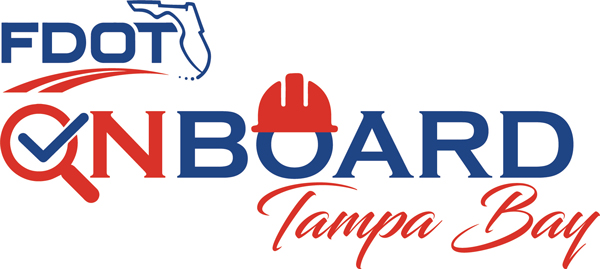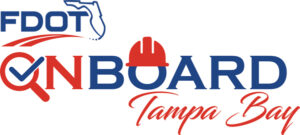Explore Construction Jobs

We Need You!
Join us in the FDOT workforce initiative to provide economic impact and change the lives within communities we serve.
OnBoard Tampa Bay is a Florida Department of Transportation (FDOT) initiative that is committed to partnering and collaborating with community based organizations to create empowerment and deliver lasting workforce solutions.
An Intro To Construction
Road and bridge construction is an important part of the construction industry, responsible for building and maintaining the connections across our communities. This type of construction work includes building, repairing, and maintaining roads, highways, bridges, tunnels, and other transportation-related structures.
Overall, jobs in road and bridge construction offer a rewarding career path for those interested in building and maintaining the critical infrastructure that keeps our communities connected. With a wide range of job roles and opportunities for growth and advancement, this field can be a fulfilling choice for those looking for a challenging and dynamic career.

Transportation Construction Labor Jobs

Jobs in road and bridge construction are diverse and require a range of skills and experience. Some of the most common job roles include heavy equipment operators, construction laborers, carpenters, welders, electricians, and engineers. These roles require a variety of skills, including the ability to read and interpret blueprints, operate heavy machinery, and perform manual labor.
The main tasks commonly associated with construction, such as excavation, building, and site preparation, are carried out by construction workers. These professionals are responsible for physically demanding work such as moving construction materials and supplies to the work site, setting up the site, operating machinery and equipment, cutting and shaping building materials, and utilizing both manual and mechanical tools. Additionally, they refer to blueprints to comprehend project specifications and adhere to all safety regulations and protocols at the job site.
The Flagman/Traffic Control Flagman works with the Traffic Control Department at work sites to direct motorists by flagging them away from worker activities, moving equipment, oncoming traffic, and performing duties such as; Set-up signs, cones, etc. around work areas to divert traffic. Follow all safety rules and regulations and wear proper safety equipment ( work boots – 6 inch with safety toe, hard hat and safety vest). Adhere to all Company Policies and Procedures.
Masonry workers complete tasks related to concrete, brick and stone. Masons mix and pour concrete to construct sidewalks, curbs, floors and walls. It is also important for masons to read blueprints to ensure that their work meets the contractor’s requirements. In most places, you can become a mason with just a high school diploma or GED, but some states require you to have governmental certification.
The Asphalt Raker/Luteman assists with the application of asphalt on highways, roadways, and parking lots using handheld tools. Must have the ability to partner with other crew members to pave per plan specifications with an emphasis on safety and quality. Also, may be asked to perform tasks of other positions as instructed by the crew Foreman to ensure daily productions are met.
A Grade Laborer measurer and finishes grade stakes, drives stakes, and stretches tight line. Knowledge of utilizing power tools: Bolts, nails, aligns, and block up under forms. Signals operators of construction or asphalt equipment to facilitate alignment, movement, and adjustment of machinery to conform to grade specifications.
A surveyor visits potential job sites before construction begins to inspect the site and measure and record data about the site’s location, elevation and contour. They then use this information to compare their data to existing records, draw and update boundary lines, determine locations for buildings and structures and outline the project’s foundation requirements. Surveyors also present their findings to government agencies and other clients.
A landscape laborer is a lawn care professional who cares for the lawn and plants on a property. A landscape technician will often have a broad range of lawn care responsibilities on a property, working to keep the area clean and all plant life thriving. A landscape technician may also give creative input over the design and layout of a property and its plants and flowers.
Pipefitters manipulate metals into the correct shape and form, transport pipes to the correct location and install them in residential and commercial buildings. They use a variety of techniques such as welding, cutting, soldering, grinding, rigging, bending and threading.
The Field Clerk is responsible for on-site administrative responsibilities in support of the project. This role performs all new hire, rehire, separation and weekly payroll system transactions – ensuring timely, accurate processing of all personnel changes and payment of wages. The person serves as a liaison between the field staff and the corporate office Human Resources, Accounting and Environmental, Health and Safety groups to ensure company policies, practices and standards are well documented for the job site overall; and for any individuals working at the site. This person assists with ordering supplies as needed, tracking and confirming deliveries, running errands, creating and reconciling purchase orders, and some vendor management.
Skilled Labor Constructions Jobs Include
Heavy Equipment Operator/Truck Driver
Heavy equipment operators control machines like bulldozers, hydraulic cranes, forklifts and backhoes. Workers in this role may be responsible for excavating ground, paving roads and transporting and installing building materials. Employers require heavy equipment operators to have a high school diploma or equivalent.
Electrician
Electricians install, maintain and repair electrical systems and wiring in residential and commercial buildings. They also make sure all electrical systems and wiring works correctly and finds and repairs the source of an issue in broken electrical systems.
Drafter
Drafters create plans and technical drawings for projects, including landscaping designs. Drafters may create by hand, however, most modern drafting occurs using computer-aided design (CAD) software. Crews carrying out a landscaping project may use plans created by drafters, and local government regulatory bodies may also require copies of draft documents in order to approve zoning clearance before workers can begin executing a landscaping plan.
Engineering (Civil)
Civil engineers design construction projects and ensure the project's goals are both achievable and feasible. They do this by analyzing budget requirements, reviewing design practicality, evaluating the project's environmental impact and sustainability and ensuring the project meets all health and safety regulations and legal requirements. Civil engineers are also responsible for identifying and resolving any issues that occur during the design and development phase.
Ironworker
Ironworkers use iron and steel to help build commercial, industrial and public structures such as roads, bridges and large buildings. They work with crane operators by moving the iron or steel into the right space by hand and then signal the crane operators to lift and position it into the right placement. Ironworkers need to know how to read blueprints and sketches to ensure they follow the correct project specifications.
Construction Accounting
Construction accountants work in the construction industry to calculate and oversee all finances of a project. Their duties include planning construction projects' budgets, performing cost analyses, and reviewing purchase orders, invoices, and supplier contracts. Their goal is to ensure that all estimated construction costs are tracked and managed.



